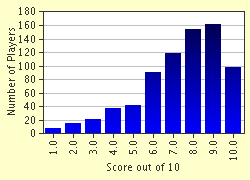Quiz Answer Key and Fun Facts
1. What is the formula for the Pythagorean Theorem? (^2 means squared)
2. The right triangle is the only type of triangle the Pythagorean Theorem can be used on without being given any other measurements besides the sides (no height given).
3. If you have a right triangle with shorter side lengths a = 3 and b = 4; what will the hypotenuse, c, equal?
4. If you have a right triangle with short side length a = 5 and hypotenuse length c = 13, what is the value of side length b?
5. If you have a right triangle with side length b = 15 and hypotenuse length c = 17, what is the value of side length a?
6. If you have a right triangle with shorter side lengths a = 7 and b = 12, what is the length of hypotenuse c?
7. IF you have a right triangle with side length a = 3 and hypotenuse length c = 9, what is the value of side b?
8. The sets, {3,4,5}; {5,12,13}; and {8, 15, 17} are all examples of what? (The numbers are the side lengths of the triangles.) Please give your answer in plural form.
9. I. 6-8-10 right triangle
II. 15-36-39 right triangle
III. 16-30-34 right triangle
Which one(s) is a true right triangle(s), meaning that they can work in the Pythagorean Theorem?
10. Will a 99-132-165 right triangle's support the Pythagorean Theorem? (Meaning the sides can fit into the formula.)
Source: Author
XxHarryxX
This quiz was reviewed by FunTrivia editor
crisw before going online.
Any errors found in FunTrivia content are routinely corrected through our feedback system.

